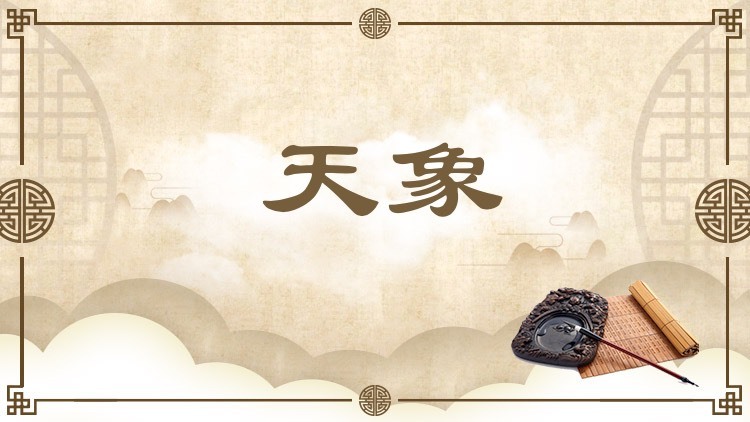Heavenly Phenomena

天空中呈现的各种“象”。“象”用以指称可见而不具形体的物象。古人认为,天空中的日月星辰、风雨雷电等都不是有形之物。因此,日月星辰的运行、风雨雷电的施降所呈现出的物象即被称为“天象”。人们通过对“天象”的观察与解释,来阐发自然与社会的运行变化及其法则。
Tianxiang (天象) signifies the various phenomena appearing in the sky, with xiang (象) denoting a visible event of an incorporeal objective presence. The ancient Chinese believed that both celestial bodies, such as the sun, moon, and stars, and meteorological symbols, such as wind, rain, thunder, and lightning, are not corporeal. Therefore, the phenomena manifested by their movement or occurrence are called tianxiang, the heavenly phenomena. Through observation and interpretation of the heavenly phenomena, the ancients attempted to explain the course and norms underlying the operation of nature and, by extension, society.
引例 Citations:
◎乃命羲和,钦若昊天,历象日月星辰,敬授人时。(《尚书·尧典》)
于是命令羲氏与和氏,恭敬地因顺上天,观测推算日月星辰的运行之象,慎重地向人们传授时令。
Xi and He were thus commanded, in reverence for and compliance with the Heaven, to observe and forecast the phenomena formed by the movements of the sun, moon, and stars and to prudently instruct the people in the changing of the seasons. (The Book of History)
◎在天成象,在地成形,变化见(xiàn)矣。(《周易·系辞上》)
在天空显现为象,在大地显现为形,在天地的形象之中显现出事物的变化。
In the heaven are phenomena, and on the earth are forms. Their movement demonstrates changes of things. (The Book of Changes)
推荐:教育部 国家语委
供稿:北京外国语大学 外语教学与研究出版社
责任编辑:钱耐安





